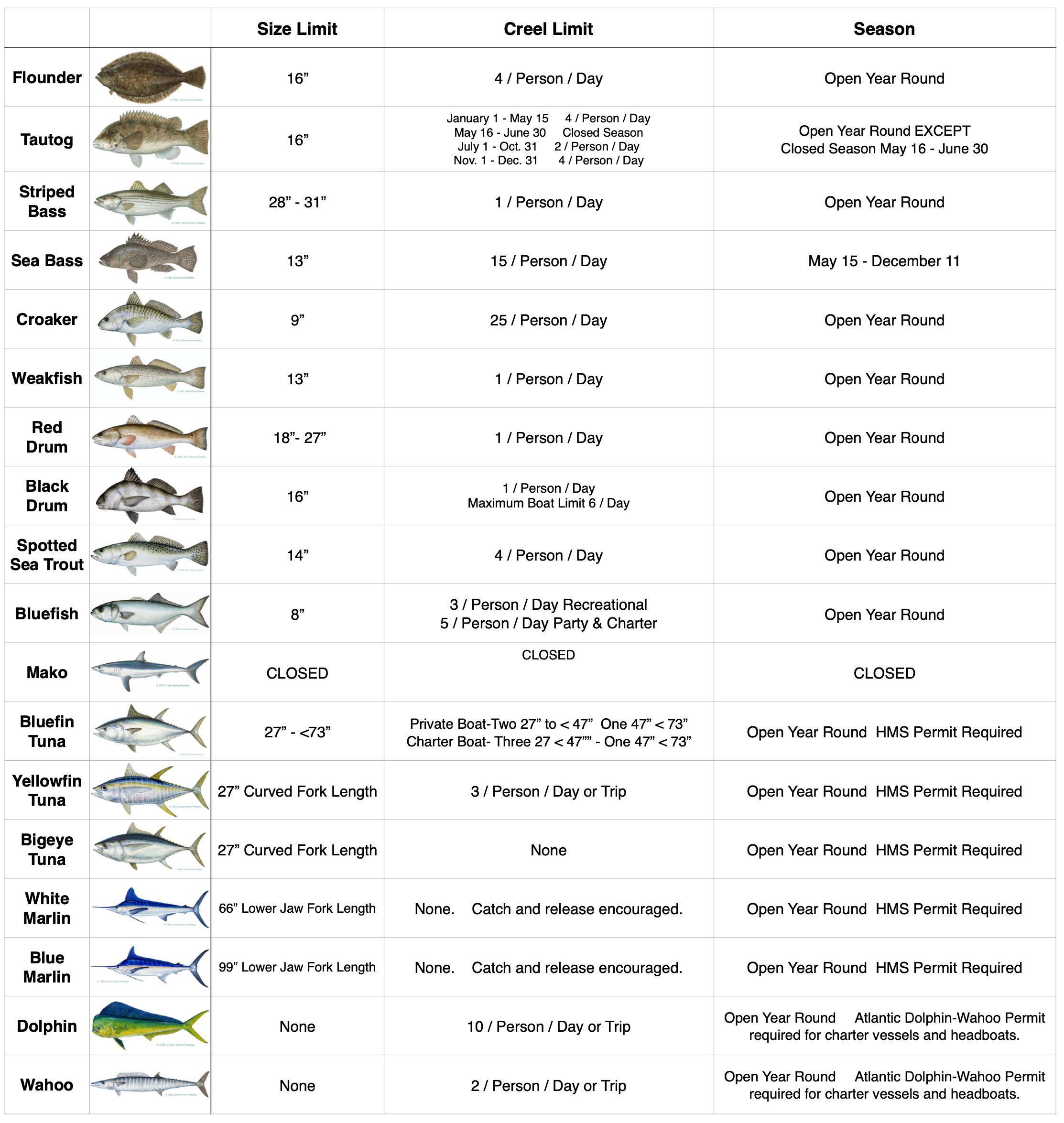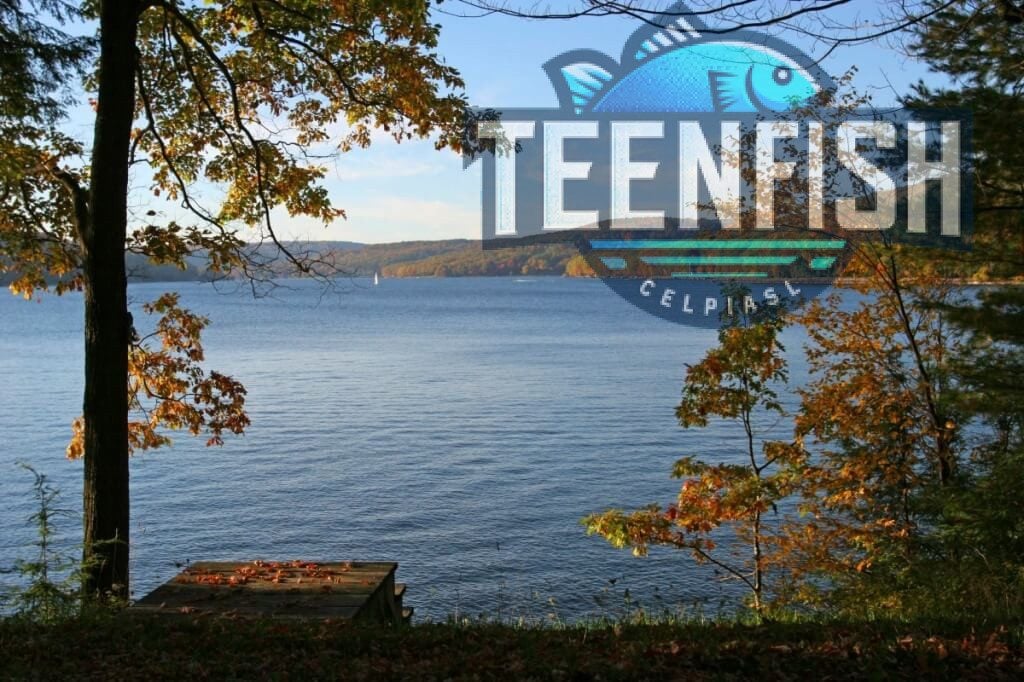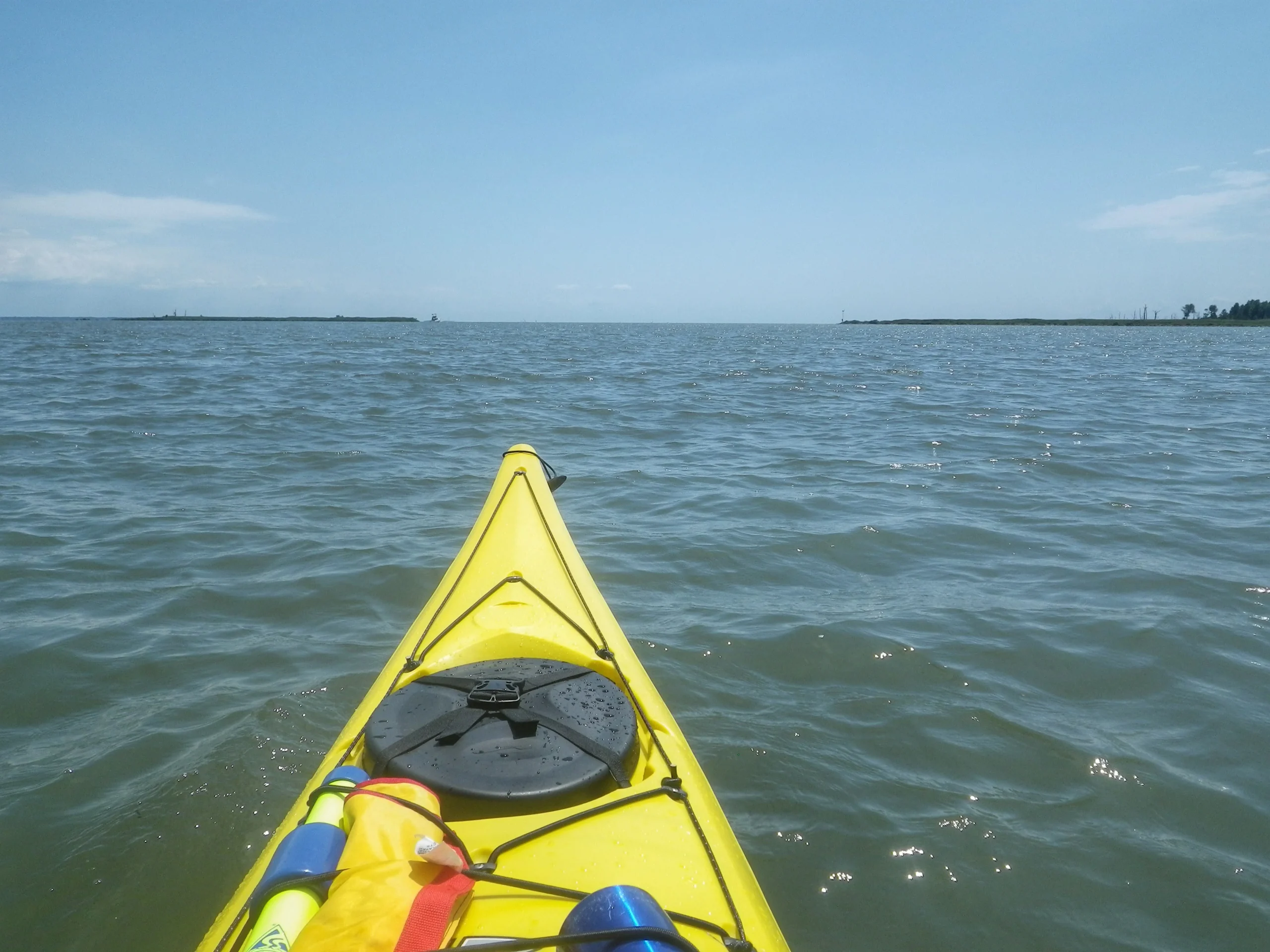Are you planning to go fishing in Maryland in 2024? Ensure you have all the necessary licenses and follow the latest regulations by referring to this comprehensive guide. We’ll cover everything from licensing requirements and fees to fishing seasons, catch limits, and special regulations to help you stay compliant and make the most of your angling adventures in Maryland.
Getting Your Maryland Fishing License for 2024
To fish legally in Maryland waters, anglers aged 16 and older must obtain a valid fishing license, unless exempt. The type of license you need depends on your residency status and whether you plan to fish in tidal (saltwater) or non-tidal (freshwater) areas.
Tidal/Saltwater Fishing Licenses
- Resident Chesapeake Bay & Coastal Sport Fishing License: $15 – Covers recreational fishing in the Chesapeake Bay and tidal tributaries.
- Non-Resident Chesapeake Bay & Coastal Sport Fishing License: $22.50
- Resident 7-Day Chesapeake Bay & Coastal Sport Fishing License: $6 – Short-term option for residents.
- Non-Resident 7-Day Chesapeake Bay & Coastal Sport Fishing License: $12 – Short-term option for non-residents.
Anglers on charter boats displaying a valid Maryland Chesapeake Bay and Coastal Sport Boat License do not need an individual license. However, they must register for free with the Maryland Saltwater Angler Registration.
Non-Tidal/Freshwater Fishing Licenses
- Resident Non-Tidal Fishing License: $20.50 – Allows fishing in Maryland’s freshwater lakes, rivers, streams, and ponds.
- Non-Resident Non-Tidal Fishing License: $30.50 (or the fee charged to Maryland residents by the non-resident’s home state, whichever is higher).
- Resident 7-Day Non-Tidal License: $7.50 – Short-term freshwater fishing license for residents.
- Non-Resident 3-Day Non-Tidal License: $5 – Short-term freshwater fishing license for non-residents.
Additional Stamps and Exemptions
- Resident Trout Stamp: $5 – Required for residents 16+ to fish for trout in non-tidal waters (included in Senior Consolidated License).
- Non-Resident Trout Stamp: $10
- Resident Senior Consolidated Sport Fishing License: $5 – Covers all tidal and non-tidal fishing privileges for Maryland residents 65+.
- Children under 16 and passengers on licensed charter boats are exempt from needing a license.
You can purchase your Maryland fishing license online through the COMPASS portal, at DNR Licensing and Registration Service Centers, or from authorized tackle shops and retailers.
How to Get Your Maryland Fishing License Online
2024 Maryland Fishing Seasons
Fishing seasons in Maryland vary based on the species and whether you’re fishing in tidal or non-tidal waters. It’s crucial to familiarize yourself with the open seasons to avoid penalties for fishing during closed periods.
Tidal/Saltwater Fishing Seasons
In the Chesapeake Bay and tidal tributaries, key season dates for popular species in 2024 include:
Striped Bass (Rockfish):
- Spring Trophy Season: May 1 – May 15 (1 fish/person/day 35″+)
- Summer/Fall Season: May 16 – Dec 10 (1 fish/person/day 19-28″)
- Closed: April 1 – April 30 and July 16 – July 31 (No targeting)
Black Sea Bass: May 15 – Dec 11 (15 fish/person/day, 13″ minimum)
Summer Flounder:
- Jan 1 – Apr 30 (4 fish/day, 16″ minimum)
- May 1 – Dec 31 (4 fish/day, 17″ minimum)
Bluefish: Open year-round (3 fish/person/day for private anglers)
Speckled Trout: Open year-round (4 fish/person/day, 14″ minimum)
Tautog:
- Jan 1 – May 15 (4 fish/day, 16″ minimum)
- July 1 – Oct 31 (2 fish/day, 16″ minimum)
- Nov 1 – 26 (4 fish/day, 16″ minimum)
Note that the Maryland Department of Natural Resources (DNR) may make in-season adjustments, so always check the latest public notices before heading out.
Non-Tidal/Freshwater Fishing Seasons
For freshwater fishing in Maryland’s lakes, ponds, rivers, and streams, the traditional opening day of trout season is March 30, 2024, at 6:30 am in most areas. However, some waters have different regulations and stocking schedules.
Other important freshwater season dates:
- Largemouth & Smallmouth Bass: Open year-round (15″ minimum size March 1 – June 15, 12″ minimum rest of the year, 5 fish/day)
- Walleye: Open year-round (15″ minimum size, 5 fish/day)
- Chain Pickerel: Open year-round except March 15 – April 30 (14″ minimum size, 10 fish/day)
- Northern Snakehead: Open year-round (no size or creel limits, harvest encouraged)
Always consult the Maryland DNR Fishing Guide for the latest season dates, as some waters have special regulations.
Size and Creel Limits for Popular Maryland Fish Species
To promote sustainable fishing, Maryland DNR sets minimum size limits and daily creel (catch) limits for many game fish species. Here are the key limits to know for 2024:
Tidal Waters
- Striped Bass: 1 fish/day, 35″+ (Spring Trophy Season), 1 fish/day 19-28″ (Summer/Fall Season)
- Summer Flounder: 4 fish/day, 16″ minimum (Jan-Apr), 17″ minimum (May-Dec)
- Black Sea Bass: 15 fish/day, 13″ minimum
- Bluefish: 3 fish/day private, 5 fish/day charter, 8″ minimum
- Speckled Trout: 4 fish/day, 14″ minimum
- Red Drum: 1 fish/day, 18-27″ slot
- Tautog: 4 fish/day (Jan-May, Nov), 2 fish/day (Jul-Oct), 16″ minimum
Non-Tidal Waters
- Trout: 2 fish/day, no minimum size, no more than 5 trout in possession
- Largemouth & Smallmouth Bass: 5 fish/day, 15″ minimum (March 1 – June 15), 12″ minimum rest of year
- Walleye: 5 fish/day, 15″ minimum
- Chain Pickerel: 10 fish/day, 14″ minimum
- Northern Snakehead: No limits, harvest encouraged
- Catfish: No limits
Some waterways like Deep Creek Lake have special regulations, so always check for location-specific rules.

Catch-and-Release and Special Fishing Areas
Maryland DNR uses various special regulations to protect fish populations and enhance recreational angling opportunities:
Catch-and-Release Areas
Catch-and-release fishing is encouraged or required in some areas and seasons:
- Striped Bass: Catch-and-release only from Jan 1 – April 30 and Aug 1 – 31 in Chesapeake Bay and tributaries.
- Trout: Some waters are designated as catch-and-release only, often with artificial lures/flies only.
- Largemouth & Smallmouth Bass: Catch-and-release encouraged, handle fish carefully.
To minimize mortality, use non-offset circle hooks when bait fishing, land fish quickly, handle them gently with wet hands, and release them back into the water promptly.
Non-Tidal Trout Fishing Areas
Maryland has three trout management areas with different regulations:
- Put-and-Take Areas: Open for harvest of stocked trout (2 fish/day creel limit).
- Delayed Harvest Areas: Catch-and-release only with artificial lures Jan 1 – June 15, then open to harvest June 16 – Dec 31.
- Catch-and-Release Areas: Catch-and-release only year-round, often artificial lures/flies only.
Some premier trout streams are managed as Trophy Trout Areas or Wild Trout Watersheds with special rules to protect native trout.
Invasive Species Regulations
To control invasive fish, Maryland encourages harvesting them with no size or creel limits:
- Northern Snakehead: Anglers must kill all snakeheads caught and not release them alive.
- Blue and Flathead Catfish: No limits, harvest encouraged, especially in tidal waters.
Penalties for Violating Regulations
Violating Maryland’s fishing regulations can result in fines, license suspensions, and other penalties:
- Fines: Range from $25 to $1000 or more depending on the violation.
- License Suspensions: Repeated or serious violations can lead to temporary or permanent revocation of fishing privileges.
- Criminal Charges: Certain violations like using illegal gear or harvesting protected species may result in misdemeanor or felony charges.
The Maryland Natural Resources Police enforce regulations and can issue citations. Violators may have to appear in court and pay restitution for resources damaged.
To avoid penalties, always obtain required licenses, follow seasons and limits, use legal gear, and respect private property rights.
Responsible Fishing Practices
In addition to following regulations, responsible anglers should adopt sustainable fishing practices to help conserve Maryland’s aquatic resources:
- Practice Catch-and-Release: Release fish you don’t plan to eat, especially larger breeding females.
- Use Barbless Hooks: They cause less injury and make releasing fish easier.
- Avoid Littering: Pack out all trash, fishing line, and tackle to keep waters clean.
- Respect Spawning Areas: Avoid fishing in spawning areas during spawning seasons.
- Support Conservation: Consider purchasing a Chesapeake Bay and Endangered Species Fund stamp to contribute to conservation efforts.
By following Maryland’s fishing regulations and adopting responsible practices, you can enjoy sustainable and rewarding fishing experiences while helping to conserve the state’s diverse aquatic resources for future generations.
Stay up-to-date on the latest rules by bookmarking the Maryland DNR Fishing Guide and checking for any updates before your next fishing trip. Tight lines!


